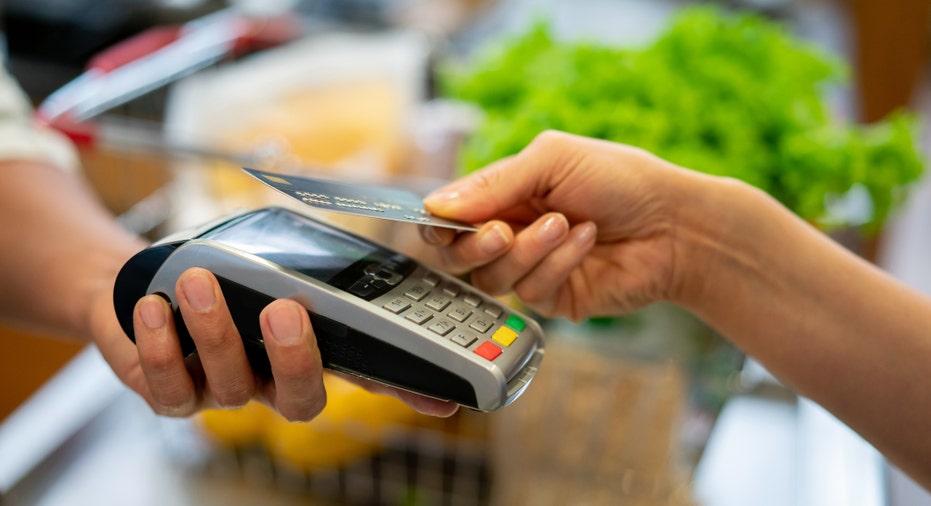How do credit cards work, and how are they different from debit cards?

Studies show that the more you know about credit cars, the stronger your own finances become. (iStock)
Learning all you can about credit cards, including the risks and rewards, is no luxury – it’s a necessity.
Studies show that the more you know about credit cards, the stronger your own finances become. Unfortunately, too many Americans don’t know all they should about their credit cards and the fallout can be costly.
What to know
Credit cards, like any financial tool, work best when the user understands how they work.
What a credit card does
A credit card represents credit issued by a financial services company that enables the user to borrow money to pay for goods and services. Those purchases are approved by the credit card provider and the cardholder is obligated to make payments toward the cost of the purchase in a specific time frame. Depending on when the payment is made, interest on the purchase made by the cardholder may also occur.
HOW TO INCREASE YOUR CREDIT SCORE FAST
Card structure
In physical form, a credit card is a small, rectangular piece of plastic with the cardholder's name on the front, along with the owner’s credit card number. On the back lies more information about the card provider. A magnetic strip on the bottom of the card allows the merchant and the credit card company to communicate electronically and approve, process and store transactions.
Increasingly, technology has enabled mobile phone users to abandon physical cards and pay for transactions via computer chips embedded in their devices.
Card obligations
Credit card approvals are based on the applicant’s economic standing and credit history. A stable income and a good track record of loan and credit payments usually lead to application approval.
Additionally, credit card approvals come with significant strings attached. Cardholders will be subject to interest rate charges, late fees, credit limit overage fees and late-or-non-payment financial penalties, or even risk losing their credit card.
Credit cards are not the same as debit cards
Make no mistake: credit cards and debit cards are not alike.
For example, payment for a transaction with a debit card is immediate and it triggers withdrawal from the cardholder’s bank account. That's unlike a credit card, which can be processed at the point of transaction with no proof of card ownership needed. A debit card also requires a personal identification number (PIN) to verify card ownership. Without it, a debit card transaction can’t be completed.
How to apply for a credit card
Applying for a credit card is easy – it’s the prep work beforehand that takes diligence.
Before you apply for a credit card, check your credit score for free at one of the three major credit scoring agencies on their web site: TransUnion, Equifax or Experian.
WHAT APR MEANS ON YOUR CREDIT CARDS AND LOANS
Make sure you credit score is in shape – a FICO credit score of 700 and above should land you a good card. And, make sure your credit report is error-free before you submit any credit card applications.
Additionally, put some time into researching the card you want. Depending on your unique needs, you may want a general credit card with rewards or cash back.
Once you’ve identified a credit card that works for you, apply at the credit card provider’s web site. Be prepared and have your Social Security number, accurate annual income estimate, and updated contact information. You’ll hear back within minutes whether you’re approved for a credit card or not.
How credit cards work
Once you have your credit card, you’re ready to make a purchase either online or at a retailer or other business that accepts credit cards.
Online
To make a purchase online, all that's required is the information on your credit card. That includes your name, credit card number, the expiration date and, in many cases, the three-digit identification on the back of your card.
Check the website you’re buying from to make sure the card is secure. Do that by confirming the site’s web URL address begins with the letters “https." Also, look for a “padlock” sign on the site’s home page, signifying the site is encrypted and your card is safe to use.
Onsite
Whether you’re at a high-end eatery or at a dry cleaner, the credit card procedure is basically the same. When you pay for your goods or service, either swipe or insert your credit card (the card reader will provide direct options for you).
WHAT CREDIT CARD SHOULD YOU GET? HOW TO CHOOSE THE BEST ONE FOR YOU
Once you do that, the merchant’s credit card reader will electronically (and immediately) confirm that your card is active, valid, and has enough funds with your card provider. When confirmed, the transaction is closed at the point of sale and you’ll be given a receipt, either paper-based or electronically, to complete the purchase. When finished, your card’s available credit limit lowers by the exact amount of your purchase (i.e., a $100 purchase lowers your credit limit by $100.)
Overall, a credit card can be an invaluable tool for consumers. It’s convenient to use, often comes with rewards, cash back offers, and discounts, and can help you build strong credit as you use the card efficiently and you pay your monthly bill on time.